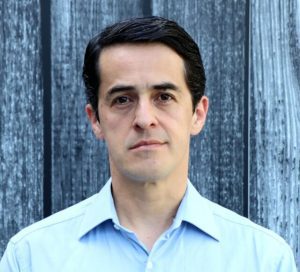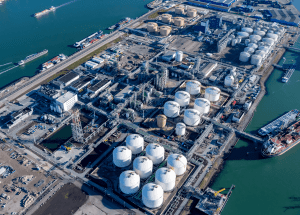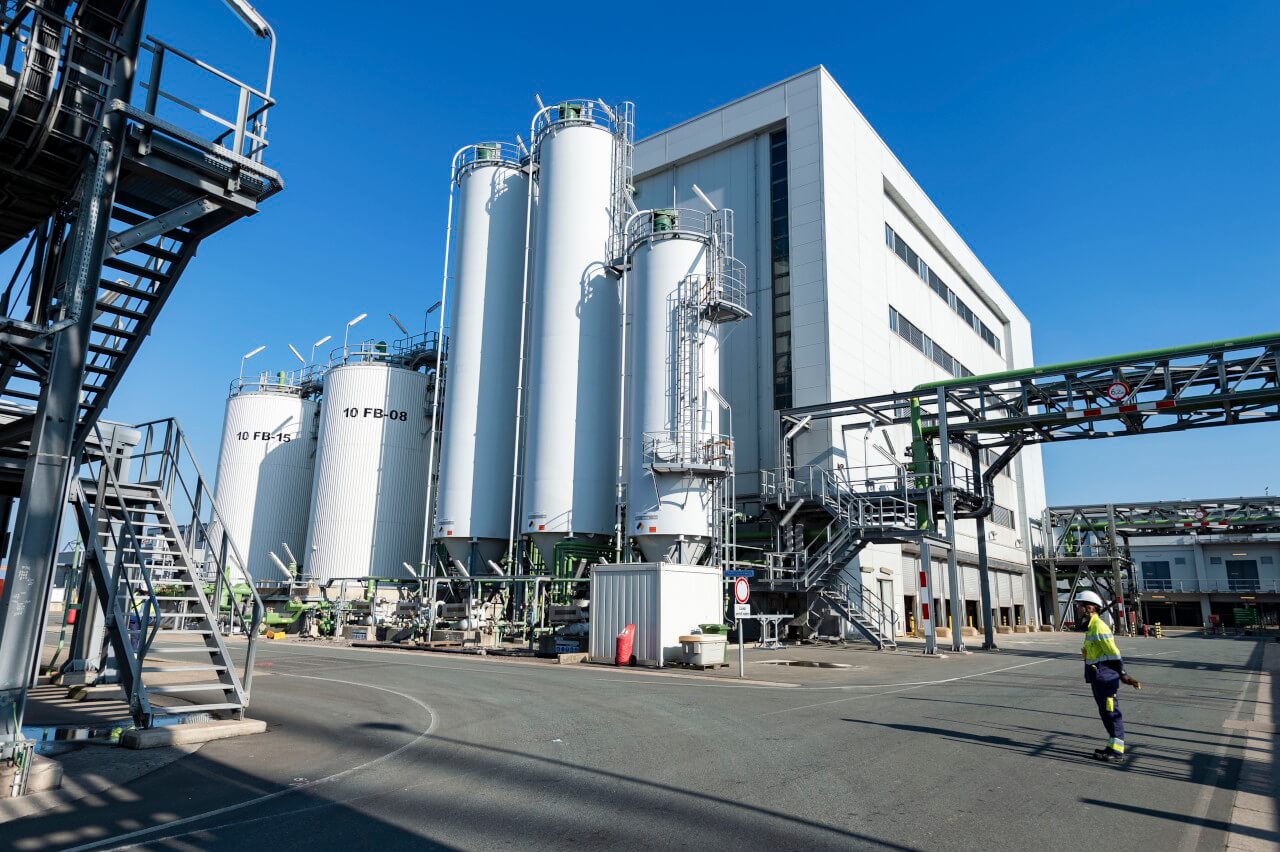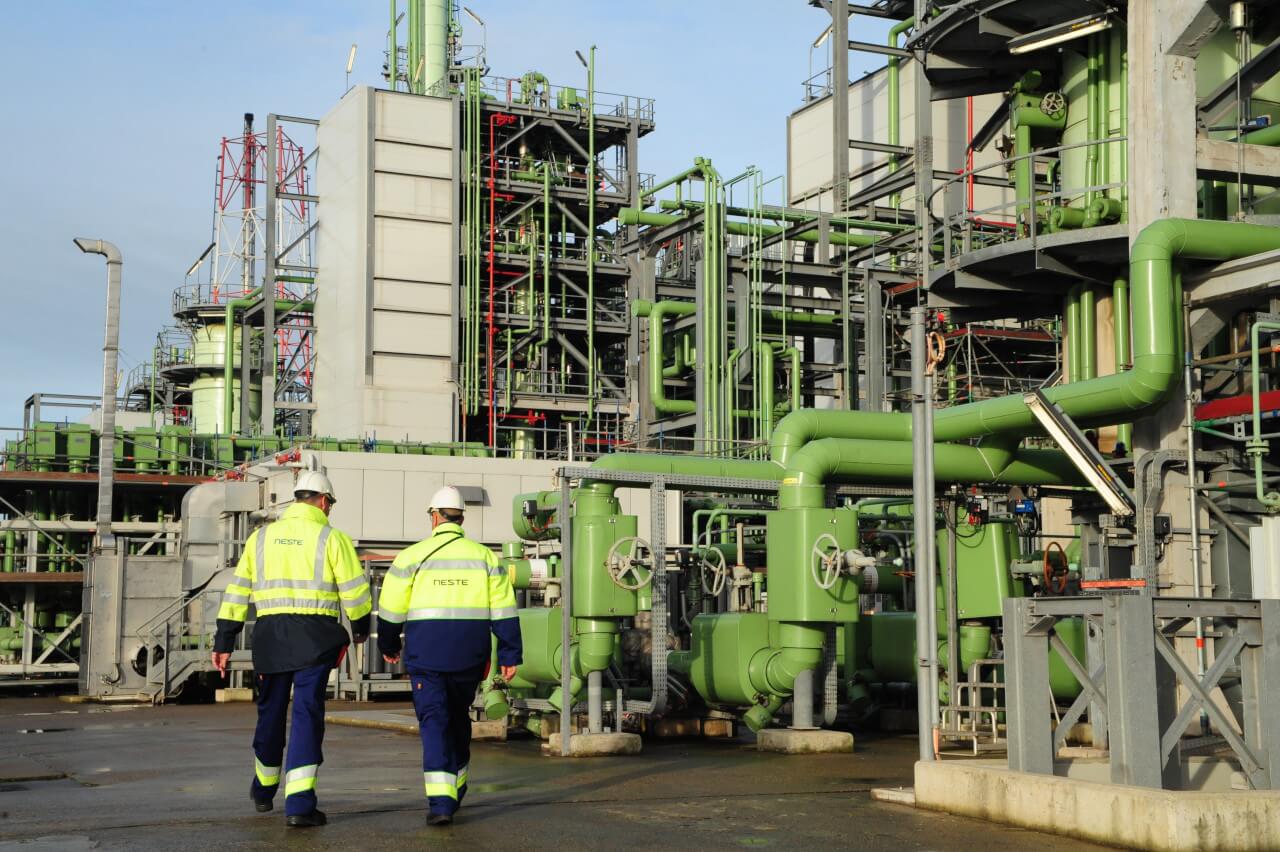Neste’s refinery in Singapore. Photo: Neste
Firmly at the vanguard of the renewable fuel sector, Neste is currently ramping up its Rotterdam presence with a second refinery. This will process waste biomass into products such as sustainable aviation fuel and renewable diesel. Specific refinery units will make extensive use of corrosion resistant alloys, thanks to valuable insights gained since Neste’s first renewable refinery started up in 2010.
By KCI Editorial, all images courtesy of Neste

Neste’s plans to increase the production of renewable fuels are anything but insignificant, with the company investing close on EUR 3 billion in Rotterdam, the Netherlands. This sum is being directed to two areas: firstly, to conduct modifications at Neste’s existing refinery, and secondly, to build an additional facility close by. Once all plans come to fruition, total production capacity in Rotterdam will be nearly doubled, to some 2.6 million tons of renewable products per annum.
With modifications to the first refinery now complete, the second refinery should be ready by 2027. It is understood that the main products from this new refinery will be sustainable aviation fuel and renewable diesel, as well as bio-propane and renewable nafta.
To complete the picture, note that Neste has additional refineries in Singapore (for renewable fuel) and Porvoo, Finland, (for both renewable as well as fossil fuels) as well as a joint cooperation with Marathon in California (for renewable fuel).
The market for renewable fuel
Data suggests that in 2024, the aviation industry consumed 350 million tons of kerosine, of which 1 million tons was sustainable aviation fuel (SAF). The renewable diesel demand was around 16 million tons in 2024, estimated to grow to around 38 million tons per annum in 2030.
To give a sense of perspective, it is understood that the total availability of waste and residue oils and fats feedstock for renewable fuels could exceed 40 million tons per annum in 2030, enabling a significant ramp-up of renewable fuel production.

Pre-treatment
Asked how Neste goes about converting organic matter into renewable fuel, Dr David Farías Moreno (Materials and Corrosion Engineer) says that the actual refining process is similar to crude oil refining. However, the use of waste and residues such as used cooking oil as a feedstock does necessitate a couple of additional, preliminary stages.
“Oils and fats from waste and residues require cleaning and upgrading before they can be refined. So first we have a pre-treatment stage, designed to remove impurities. The result is
a homogenous raw material with a consistent quality. Next, we convert the feedstock into hydrocarbons. This phase relies on Neste’s NEXBTL™ technology, short for Next Generation Biomass To Liquid.”
The pre-treatment and NEXBTL processes are essential parts of the complete production process. These steps enable Neste to refine a wide variety of feedstock streams – even low-grade waste and residues – into high quality renewable products. Neste developed its NEXBTL technology (see box) based on experiences initially gained at its oil refineries. “The quality of crude oil can vary depending on the well location. Learning how to work successfully with challenging crudes gave us important technical insights that later proved invaluable during the development of pre- treatment technologies for vegetable-based waste streams,” comments Dr Farias.
Quality and quantity
A major hurdle for any company looking to produce renewable fuels is ensuring a consistent flow of raw material of an appropriate quality and quantity. This explains Neste’s decision to acquire Mahoney Environmental in the US in 2020, in a move designed to strengthen its growth strategy and position in renewable raw material sourcing. It is understood that Mahoney collects used cooking oil from around 100,000 locations, including restaurants, hotels, sports stadiums and airports.
Shift to higher alloys
Although commodities like used cooking oil might sound benign, the presence of impurities in certain types of biomass necessitates the deployment of corrosion resistant alloys. Dr Farias: “As regards the actual refining processes, materials such as carbon steel and low alloy steel are perfectly adequate when refining renewables. However, the pre-treatment and NEXBTL units in our existing Rotterdam refinery made extensive use of stainless steels such as 304, 316 and 321. Based on lessons learned, we are now increasingly specifying duplex stainless steels as well as higher nickel alloys such as 625 and 825. In fact, 625 has become a workhorse material for certain areas.”
The growing specification of higher grades is a direct consequence of changes in the feedstock, explains Dr Farias.
“Initially, alloys such as 304 and 316 performed well. However, it was quickly realised that the higher concentration of unwanted impurities in waste and residues, such as sulphur and chlorides, was causing issues such as pitting and stress corrosion cracking. Hence, for particularly sensitive areas, we are now using increasing amounts of 625 as well as duplex stainless steels in the pre-treatment areas. That applies to both the new refinery being built as well as the existing set-up when equipment is upgraded.”
Asked about quantities, Dr Farias indicates that ‘significant volumes’ of corrosion resistant alloys are required for pre-treatment and NEXBTL stages.
“Due to the aggressive process conditions linked to our feedstock, normal stainless steel grades like 304 or 316 are simply not enough to provide sufficient corrosion resistance. Therefore, higher CRAs are necessary extensively throughout both our pretreatment and NEXBTL process units.”
Materials expertise
As a company, Neste boasts extensive materials expertise. “The materials engineering team based in Finland comprises twelve materials specialists, some of whom have specialist knowledge of specific areas such as valves, welding, corrosion, high-nickel alloys, etc. I just happen to be the only team member located outside of Finland,” comments Dr Farias.
Further, each refinery location – Rotterdam in the Netherlands, Singapore, and Porvoo in Finland – has its own materials and corrosion site engineer. “We are all in constant communication, meeting regularly to address metallurgical issues, assess new projects, etc,” states Dr Farias.
As appropriate, Dr Farias and his colleagues will also discuss issues like metallurgy and corrosion with third parties such as suppliers and engineering companies. However, the usual practice is for Neste’s in-house engineers to specify which materials to use.
NEXBTL™ in a nutshell
- Neste’s NEXBTL converts biogenic fats and oils into high-quality renewable fuels, which are chemically similar to their fossil counterparts.
- The first stage of the NEXBTL process is called hydrodeoxygenation, where oxygen atoms are removed by using hydrogen. This creates a pure hydrocarbon with high energy density.
- In the second stage of the NEXBTL process, the hydrocarbons are isomerised to tune the properties of the end products for different product applications. In the isomerisation process, the hydrocarbon structure is branched to create the desired properties.
- NEXBTL was patented in 1997, with the first NEXBTL unit inaugurated at Neste’s Porvoo, Finland refinery in 2007.
For more info plus a handy video presentation, please visit: https://www.neste.com/products-and-innovation/innovation/nexbtl
Motivating
Reflecting on his decision to join Neste some five years ago, Dr Farias says he was immediately attracted by the new challenges the post would bring. “I could see that in terms of renewable fuels, Neste really were pioneers, paving the way to progress by solving issues hitherto completely unknown. In a sense, we are in the same position as the crude oil refinery sector was several decades ago, tackling corrosion mechanisms head-on without being able to fall back on existing comparable cases.”
The steep learning curve remains a constant source of inspiration. “This is not a standard refinery. Changes in the feedstock keep us on our toes as we are always mindful of potential corrosion issues. Especially in areas characterised by high pressure, low temperature, stagnant flow, etc. Working in a renewable fuel refinery is therefore highly motivating to me as a corrosion engineer, but also as a family man. Like all of my colleagues, I sincerely wish to play a part in helping to make our planet that little bit greener.”
About this Featured Story
Appearing in the September 2025 issue of Stainless Steel World Magazine, this Featured Story is just one of many insightful articles we publish. Subscribe today to receive 10 issues a year, available monthly in print and digital formats. – SUBSCRIPTIONS TO OUR DIGITAL VERSION ARE NOW FREE.
Every week we share a new Featured Story with our Stainless Steel community. Join us and let’s share your Featured Story on Stainless Steel World online and in print.




